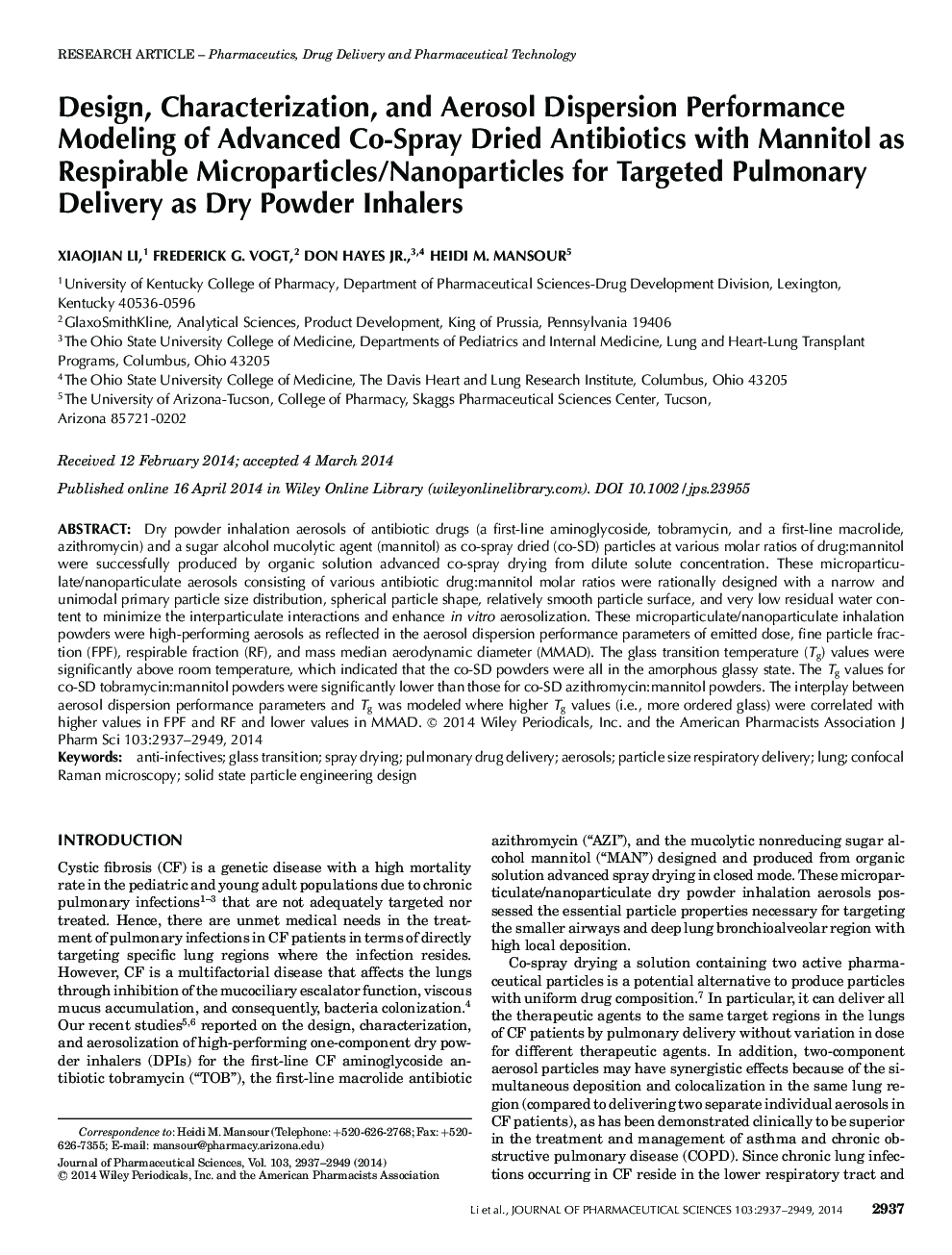| Article ID | Journal | Published Year | Pages | File Type |
|---|---|---|---|---|
| 2484725 | Journal of Pharmaceutical Sciences | 2014 | 13 Pages |
Dry powder inhalation aerosols of antibiotic drugs (a first-line aminoglycoside, tobramycin, and a first-line macrolide, azithromycin) and a sugar alcohol mucolytic agent (mannitol) as co-spray dried (co-SD) particles at various molar ratios of drug:mannitol were successfully produced by organic solution advanced co-spray drying from dilute solute concentration. These microparticulate/nanoparticulate aerosols consisting of various antibiotic drug:mannitol molar ratios were rationally designed with a narrow and unimodal primary particle size distribution, spherical particle shape, relatively smooth particle surface, and very low residual water content to minimize the interparticulate interactions and enhance in vitro aerosolization. These microparticulate/nanoparticulate inhalation powders were high-performing aerosols as reflected in the aerosol dispersion performance parameters of emitted dose, fine particle fraction (FPF), respirable fraction (RF), and mass median aerodynamic diameter (MMAD). The glass transition temperature (Tg) values were significantly above room temperature, which indicated that the co-SD powders were all in the amorphous glassy state. The Tg values for co-SD tobramycin:mannitol powders were significantly lower than those for co-SD azithromycin:mannitol powders. The interplay between aerosol dispersion performance parameters and Tg was modeled where higher Tg values (i.e., more ordered glass) were correlated with higher values in FPF and RF and lower values in MMAD. © 2014 Wiley Periodicals, Inc. and the American Pharmacists Association J Pharm Sci 103:2937–2949, 2014
